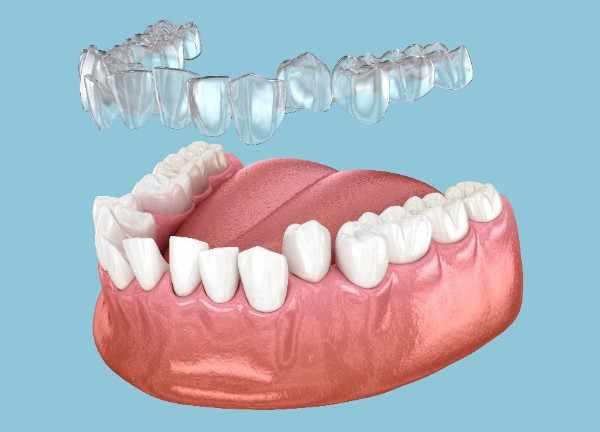What to Do if Teeth Shift After Invisalign Treatment

Completing Invisalign treatment is an exciting milestone, offering a straighter smile without the visibility of traditional braces. However, some patients may notice minor teeth movement after finishing their aligner treatment. Teeth shifting can be worrying, but understanding why it happens and how to manage it effectively ensures your smile stays aligned and healthy.
Why Teeth Shift After Invisalign
Even after successful Invisalign treatment, teeth are naturally prone to movement. This occurs due to a combination of factors:
- Biological response: Teeth are surrounded by soft tissues and embedded in the jawbone, which continue to exert pressure and can cause gradual drifting.
- Incomplete compliance: Not wearing retainers as instructed can allow teeth to move back toward their original positions.
- Age-related changes: Changes in jaw alignment or bite over time may influence tooth positioning.
- Lifestyle habits: Chewing mostly on one side, teeth grinding, or other habits can affect alignment.
Minor shifting is common, but noticeable movement warrants professional advice from a dentist in Exeter.

Signs Your Teeth May Be Shifting
Recognising early signs helps prevent more significant problems:
- Spaces or gaps appear between previously aligned teeth.
- Bite feeling uneven or teeth not fitting together as they once did.
- Crowding or overlapping, particularly in the lower front teeth.
Early detection often leads to simpler corrective solutions and avoids extensive treatments later.
Immediate Steps to Take
If you notice teeth shifting, acting quickly is essential. First, ensure you are wearing your retainer exactly as advised. Scheduling a check-up with a Dentist in Exeter allows for professional assessment and guidance. Avoid habits like chewing hard foods, nail-biting, or using your teeth as tools, as these can exacerbate movement.
Retainers: Your Post-Invisalign Ally
Retainers are the most effective way to maintain your smile. There are two main types: fixed and removable. Fixed retainers consist of a thin wire bonded to the back of the teeth, often on the lower front, and usually remain in place for years with regular dental checks. Removable retainers are clear plastic or acrylic devices worn over the teeth, often nightly after the first few months.
Maintaining your retainer involves daily cleaning with a soft brush and lukewarm water, storing it safely in a case when not in use, and never chewing on it to avoid warping. A Dentist in Exeter can recommend retainer adjustments if slight shifting occurs.
Retainer Wear Recommendations
- Wear your retainer exactly as advised, especially during the first six months post-treatment.
- Gradually transition to nightly wear only after guidance from your dentist.
- Clean and inspect retainers regularly to ensure proper fit and function.
Minor Shifts: Simple Solutions
Small changes in alignment can often be corrected without a full new treatment plan. Options include re-wearing your original Invisalign aligners for a short period or using refinement aligners, which are a limited set of trays to target minor issues. Slight adjustments to nighttime retainer wear may also prevent further drifting. Consulting an invisalign Exeter ensures the correct approach.
Corrective Options
- Short-term Invisalign aligners to correct minor shifts.
- Refinement trays for targeted adjustments.
- Fixed retainers to provide long-term stability.
When to Consider More Intensive Treatment
If teeth have shifted significantly, more comprehensive treatment may be needed. This can include a new Invisalign plan or alternative orthodontic appliances if Invisalign is no longer suitable. Early consultation with a dentist ensures the best solution is selected, reducing long-term complications.
Lifestyle Habits to Protect Your Smile
Maintaining your results involves more than just retainers. Simple lifestyle adjustments can significantly reduce the risk of teeth shifting:
- Avoid teeth grinding by using a night guard if necessary.
- Maintain strong oral hygiene to support gum and bone health.
- Limit habits such as biting pens, chewing ice, or using teeth to open packages.
Adopting these habits complements the effects of Invisalign and helps ensure long-lasting alignment.
Lifestyle Habits for Long-Term Maintenance
- Avoid habits such as nail-biting, chewing pens, or excessive gum chewing.
- Use a night guard if teeth grinding is a concern.
- Attend regular dental check-ups to monitor alignment and oral health.
Monitoring and Follow-Up
Even if teeth appear perfectly aligned, regular monitoring is important. Schedule annual or semi-annual dental visits to detect subtle shifts early. Modern technology, including 3D scans and digital impressions, allows for precise monitoring and timely intervention.
Long-Term Retainer Strategies
Over time, your dentist may adjust your retainer plan to accommodate natural shifts and prevent relapse. Some patients benefit from lifetime nightly retainer use, while others can reduce wear gradually under supervision. Consistency is key—neglecting retainers, even briefly, can lead to noticeable movement.
Managing Post-Treatment Anxiety
It’s common to feel concerned when teeth move after treatment. Understanding that minor shifts are normal and treatable can help ease anxiety. Documenting your smile with photos and tracking changes over time allows you and your dentist to take swift action if needed.
Consulting a Specialist
If you notice persistent or significant shifting, consulting a dentist experienced in Invisalign is essential. Specialists can evaluate whether refinement aligners, new retainers, or alternative treatments are required. Early intervention often saves time, money, and stress.
The Role of Regular Dental Check-Ups
Even after completing Invisalign treatment, routine dental visits play a crucial role in maintaining your results. Dentists can monitor subtle movements that may not be noticeable to the naked eye and adjust retainers or recommend minor refinements if needed. Modern dental technologies, such as 3D scans, digital impressions, and intraoral cameras, allow for precise monitoring of tooth position over time. These check-ups not only help prevent relapse but also support overall oral health, ensuring your gums and jaw remain healthy while your teeth stay perfectly aligned.

Conclusion
Teeth shifting after Invisalign treatment is common but manageable. Following retainer instructions, adopting healthy habits, and consulting a professional ensure your smile remains aligned. For anyone noticing post-treatment movement, an experienced Dentist in Exeter can guide corrective measures. At EDE, we provide comprehensive follow-ups and solutions to maintain your perfect smile, restoring confidence even if minor shifts occur.
- Art
- Causes
- Crafts
- Dance
- Drinks
- Film
- Fitness
- Food
- Giochi
- Gardening
- Health
- Home
- Literature
- Music
- Networking
- Altre informazioni
- Party
- Religion
- Shopping
- Sports
- Theater
- Wellness




